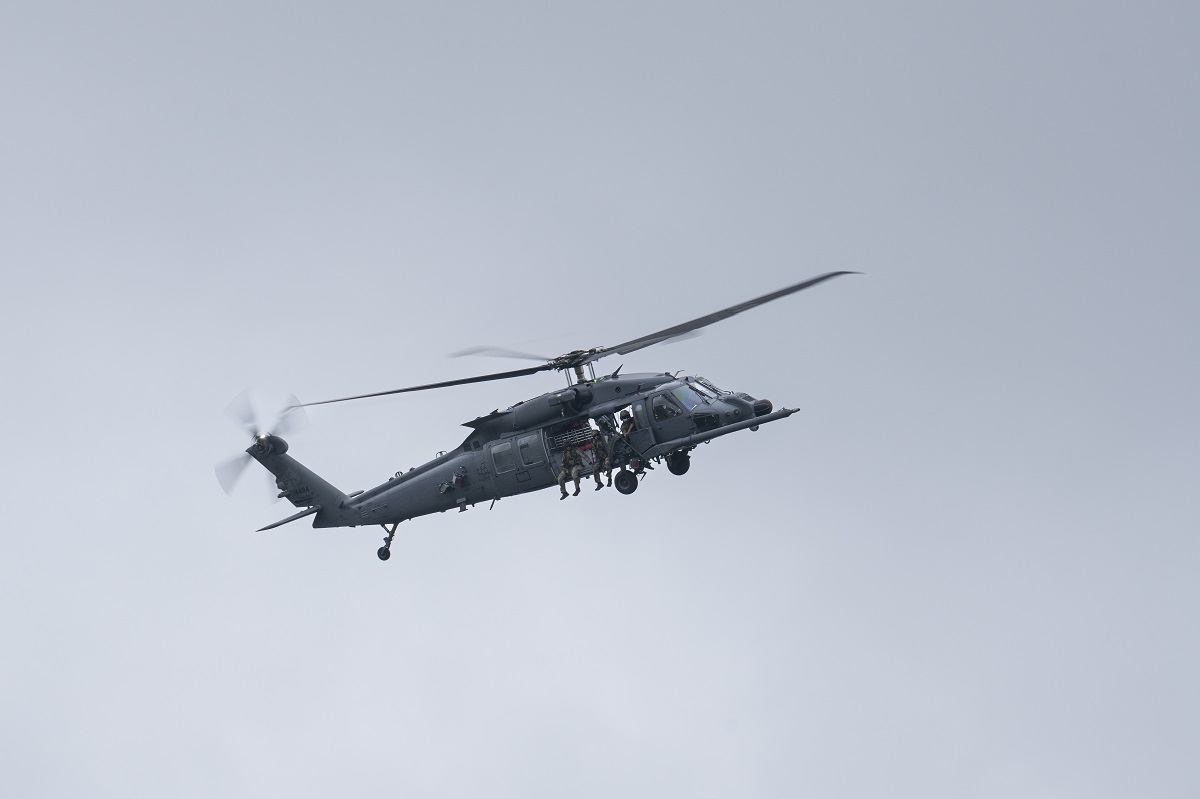Air Force Gen. Mark Kelly, the head of Air Combat Command, on Oct. 12 declared that the Lockheed Martin [LMT] HH-60W Jolly Green II combat search and rescue helicopter (CSAR) reached initial operational capability (IOC) on Oct. 4.
The status means that the Air Force is able to field four HH-60Ws to any location for a 30-day deployment.
The HH-60W is to replace the HH-60G Pave Hawk in the CSAR role. The Air Force has decreased the number of HH-60Ws that the service plans to buy from 113 to 75, but Congress may reverse that decision.
In 2020, the Air Force tagged the HH-60W as the Jolly Green II in homage to the HH-3E “Jolly Green Giant,” also built by Lockheed Martin’s Sikorsky unit (Defense Daily, Feb. 27, 2020). The HH-3E rescued downed airmen during the Vietnam War in the late 1960s.
“The HH-60W offers a range of improved capabilities over its predecessor, the HH-60G Pave Hawk, to include improved range and survivability, a new fuel system, advanced avionics and more,” ACC said on Oct. 12. “As a digitally focused platform, it also allows faster movement of data and better integration with other platforms and combatant command capabilities.”
Lockheed Martin said that the HH-60W’s fuel capacity is 644 gallons, versus 360 gallons on the Pave Hawk, and that the company has delivered 24 HH-60Ws so far, including the engineering and manufacturing development and Lot 1 aircraft. The Lot 2 delivery of 12 HH-60Ws began in June, the company said.
The Air Force 41st Rescue Squadron at Moody AFB, Ga., received the first two HH-60Ws in January last year.
The HH-60Ws may receive upgrades, including one that may replace the aircraft’s missile warning system (MWS).
The HH-60W program said last year that it is exploring a directional infrared countermeasures system that weighs less than 150 pounds, “preferably replaces MWS entirely, although, solutions that utilize MWS will be considered,” does not require external airframe modifications, has Band IV spectrum IR threat detection, is able to communicate with the ALE-47 to dispense countermeasures, allows future upgrades, and reduces ground clutter and ensures full lower hemisphere coverage (Defense Daily, Oct. 15, 2021).
